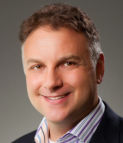For this two-part series, we sat down with participants of the Gen Cyber Teacher’s Camp, which has been held at University of Maryland Global Campus, to learn how they are infusing cybersecurity concepts and career advice into non-STEM classrooms.
Often, when we talk about cybersecurity concepts and careers, it is in the context of STEM education. But how do you inject cybersecurity into non-technical classes? Cody Renzer, a social studies teacher at Chesapeake Bay Middle School in Anne Arundel County, Maryland, has some answers.
To start, in his classes Renzer likes to use daily “brain breaks,” a time to step away from the social studies curriculum to discuss different careers and concepts within the context of social studies.
“I’ll ask students, for example, what they think cybersecurity forensics is and they might say that it’s a hacker or someone who works with dead bodies,” he said. “And I’ll explain that it’s actually someone who analyzes data and looks at evidence in computers.” When Renzer talks about cyber forensic starting salaries, his students really pay attention.
Renzer aims to teach kids to be creative about their career paths, whether they go to college, technical school, or work toward technical certifications.
“Students who are interested in the medical field can also look at data security analyst positions at hospitals where they might work to secure information,” he said. “I’ll explain to them that they can find a niche in any industry.”
Renzer also relates the basics of cyber hygiene to concepts in social studies. “One of the first lessons I give is about cyber hygiene and how to be a good ‘netizen.’ In other words, how are you interacting with social media in a way that is safe?” he says.
Renzer believes that one of the biggest challenges for the current generation of students is awareness of their digital footprint and how the online information they share can collide with societal conventions, government regulation, and privacy laws.
“I’ll tell them that in Europe some countries have rules that establish the right to be forgotten and that we don’t have that here,” he said. “I try to get them thinking about how they want their information to be remembered and whether they think they deserve the right to be forgotten.”
Renzer also tries to get his students to think about creating laws for privacy that relate back to social studies, legal systems, and at how governments work.
“I try to get them to look at themselves as individual citizens and where they fit into the grand scheme of that and how they can make their voice heard,” he said.
Stacy Wright, a STEM/Computer teacher and robotics coach at the Creekside Christian Academy in McDonough, Georgia, spent most of her career serving in business data and analysis positions at Chick-fil-A, Southstar Energy, and Exxon Mobil, among other companies. She comes to K-12 cybersecurity education with a STEM/computer perspective.
When Wright first introduced cybersecurity education, it was only in her computer science classes. Participating in the Gen Cyber Teacher Camp over the summer helped her learn how to infuse concepts into other classes, including engineering and aviation.
“I found that all my classes really needed to learn about cybersecurity,” she said.
Now she spends a couple of lessons in each class understanding how technology fits in with those disciplines,” she said. “For example, we’ll look at what could go wrong in the aerospace industry and how a cybersecurity issue could impact everyone.
Wright also plans to introduce more lessons on digital citizenship and what people can do to keep themselves safe. “I started with our teachers,” she said. “I generally hold a 30-minute session to remind teachers about all of the risks that are inherent in our digital technology.”
To teachers and students, Wright emphasizes two cyber safety basics: Accept all software updates because many of them include security features. And take time and think before you click.
Wright also tells her non-technical students that cybersecurity needs people, not just programmers.
“Cybersecurity needs lawyers, project managers and people who can translate the technical into something understandable to all,” she said. “I tell them not to think only about the hacker they see on TV.”
